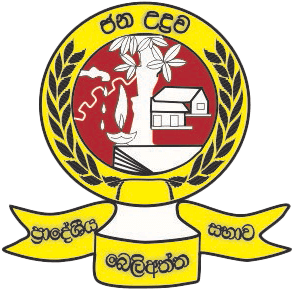When researching the historical information of this region we are able to discover ruins from areas such as Maligathanna, Udugalmote, Pallattara, Beligalla, Uthimaluwa, Watarakgoda, Gatamanna and Galagama which belong to the Beliatta Local Council limits. It is evident from these ruins that this region was once a very developed area in the Ruhunu kingdom where many of the local elite lived at a time when the country was divided into 3 kingdoms; Ruhunu , Maya and Pihiti.
Legend has it that the name ‘Beliatta’ came about from a Beli tree and an old lady who used to sell Beli fruits. Legend also has it that the palace of king Minikirula who was a king of the Ruhunu Kingdom was situated in the Maligatanna region and that the place he used to rest after taking a bath was known as ‘Hitinamaluwa’ and later came to be known as ‘Sitinamaluwa’. Furthermore, the place at which the king left his ‘Palakkiya’ (a type of carriage in which the king used to travel) to cross a stream of water was known as ‘Pallattara’.
It is also stated that the junction situated close to Beliatta known as ‘Lunu Kade Handiya’ got its name because it used to be the centre at which salt traders travelling in bullock carts sell their salt. In close proximity to this junction there was a small mountainous jungle in which it is said that there were tigers and so the region came to be known as ‘Kotigodalla Kanda’ and is presently known as ‘Kotugodalla’.
In addition, the town Kahawatta situated close to Beliatta was once a garden (Watta) where many thousands of Bhikku monks attired in yellow are said to have lived and the region from which alms were provided for them was known as ‘Dangmulla, and later came to be known as ‘Dammulla’.
A scholarly Bhikku by the name of Ven.. Sitinamaluwe Dhammajyothi was said to have been closely associated with the then King Rajasinghe II of the Kandyan Kingdom. This is evidenn when inspecting the The Neela kobo Sandeshaya written by a Bharana Mathematician who lived in Sitinamaluwa at the time. According to the text Sagharaja wathagotha of the Kandyan Kingdom, there were some bhikku monks who pioneered the renaissance of Buddhism by building Buddhist temples through which villages were later formed. They were; ven. Weihella chief monk for the Mulgirigala Viharaya, ven. Watarakgoda Dhammapala chief monk for the Udugalmote Galkema temple and Ven. Sitinamaluwa Dhammajyothi for the Sitinamaluwa Purana viharaya.



